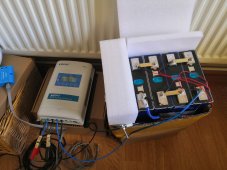Matty-Lee
New Member
- Joined
- Jan 21, 2021
- Messages
- 49
I'm planning on building a box out of plywood for my 12v LiFePO4 battery before I house it under the passenger seat of my van.
I live in the UK and it doesn't get really really cold or really really hot (-10 to +39 are probably the extremes) although it may get pretty warm in the van cab area with all the glass there. The charger has a low temp disconnect.
I've seen people insulate batteries and I've seen people say that ventilation is required.
The battery came with that white foam which I thought might be good to put inside the box around the battery.
The question is should I use it in my box or just keep it ventilated? Maybe use it bottom and sides and ventilate the top?
Please don't cry over the picture as I'm just testing it works.

I live in the UK and it doesn't get really really cold or really really hot (-10 to +39 are probably the extremes) although it may get pretty warm in the van cab area with all the glass there. The charger has a low temp disconnect.
I've seen people insulate batteries and I've seen people say that ventilation is required.
The battery came with that white foam which I thought might be good to put inside the box around the battery.
The question is should I use it in my box or just keep it ventilated? Maybe use it bottom and sides and ventilate the top?
Please don't cry over the picture as I'm just testing it works.



